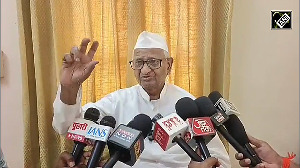Driving down the price of the Tata Nano couldn't have been done without the collective effort of the component suppliers. Some of the biggest and the best in the business were roped in, with scissors and ingenuity to bring out solutions within a specified cost structure.
Take Tata Johnson controls, for instance, who developed the seats for the small car. Tata Motors specified that the seats needed to be light, yet offer good overall body support and meet all safety requirements. The end result were front seats based on a single brace structure instead of individual rails, a frame and the right amount of foam to ensure overall seat comfort wasn't lost. The basic variant in fact doesn't even offer seat back adjustments for the passenger, thus saving on crucial rupees.
Sister company Tata TACO worked on parts like interior injection mouldings, dashboard aggregates and door handles. It also entered into a JV with Ficosia International of Spain to supply cables and mirrors for the car that are being produced at the company's Hinjewadi, Pune facility. Tata TACO will supply over 20 per cent of all the parts being built for the Nano.
A surprise entrant into the proceedings turned out to be Kinetic Engineering. The company best known for its two-wheeler business became party to the supplier base just months after the car was showcased to the world. It will supply the transmission gears for the car, a crucial component in the drivetrain.
Bosch was asked to develop the engine management system for the car. A relatively complicated and expensive component in general, Bosch imported the control unit, sensors and actuators for the car.
For the Nano, it created a blink mode that allows for the car's health to be detected even without a diagnostic tool. One can also know the fuel efficiency during the last five cycles. Despite trying to keep costs in check, Bosch also managed to have a limp-home mode in case some sensors on the EMS fail.
For a small car, a powerful air-conditioner that doesn't sap engine power was crucial. Behr, the German air-conditioning expert was roped in. The HVAC modules, manual control heads and condensors were developed by Behr, in association with Anand Automotive systems. A 60cc rotary compressor from Panasonic has been used -- about 10cc larger than the one on the Maruti 800.
MRF became the exclusive partner in development of the tyres for the first lot of cars. Using tubeless tyres of different widths for the front and the rear, MRF's brief was three-pronged -- low rolling resistance for better efficiency, good ride and tyre life characteristics and a tyre setup that dials out any traces of oversteer. The last part turned out to be the biggest challenge, and one of the reasons why a wider tyre for the rear was utilised.
Some of the other important suppliers included Sona Koyo for the steering assembly, Lumax for the lights and Caparo for the body panels. A rack and pinion steering developed by Sona uses a two-spoke variant for the base version and three-spoke variants for the CX and LX versions.
Additionally, the unit was developed to be easily collapsible for transportation and ease of maintenance reasons. Selective inner panels were developed by Caparo who also supply to Maruti, amongst others.
A whole host of other suppliers were also involved in the project who, despite supplying smaller number of components played their part.
At the end, despite steel price fluctuations, a tanking economy and component suppliers suffering from immense revenue pressures, the combined operations have helped Tata Motors achieve the magical Rs 1 lakh (Rs 100,000) tag.







 © 2025
© 2025